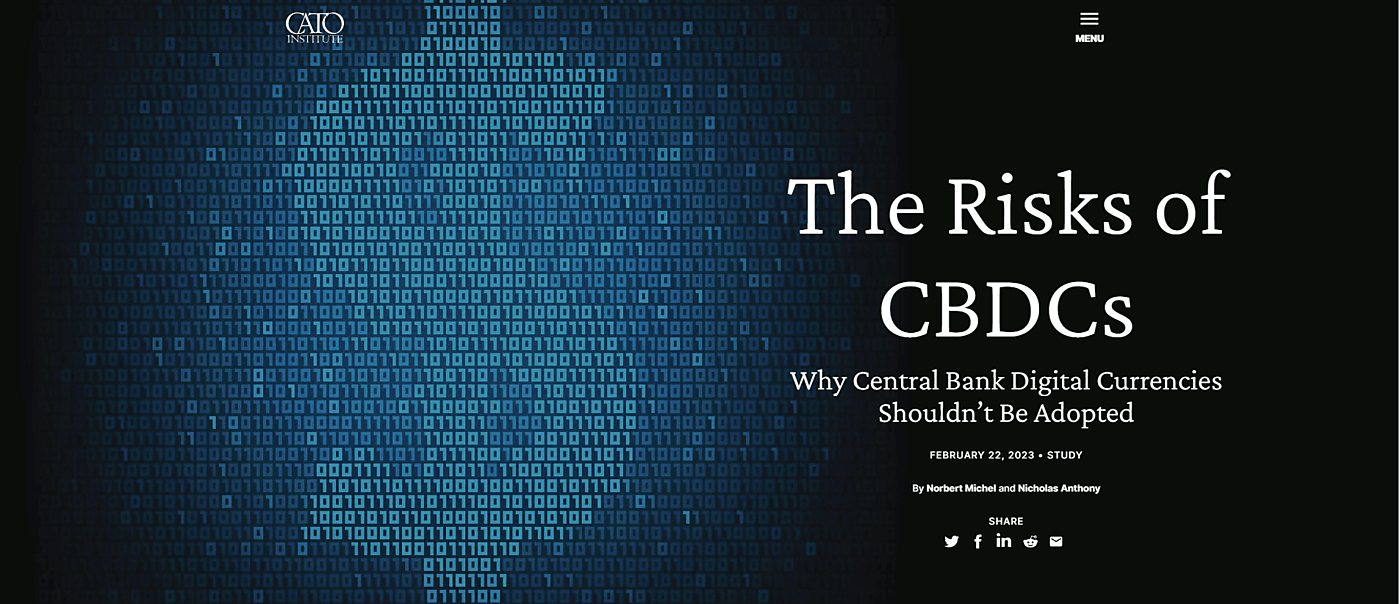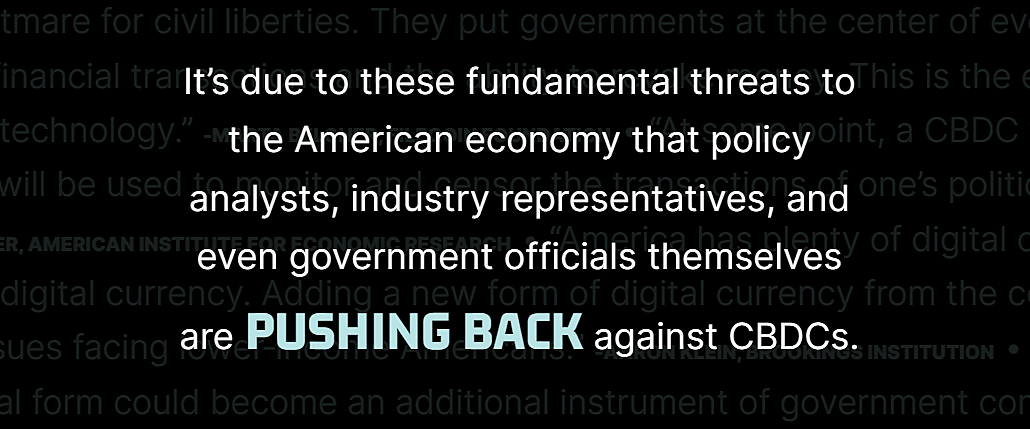Economics
Announcing New CBDC Policy Analysis and Webpage
Nicholas Anthony
Norbert Michel and I have a new Cato Policy Analysis on central bank digital currencies, or CBDCs. The report begins by dispelling…

Norbert Michel and I have a new Cato Policy Analysis on central bank digital currencies, or CBDCs. The report begins by dispelling some of the myths about the benefits of CBDCs. The report makes the case that a CBDC would not be a solution for financial inclusion, faster payments, better monetary policy, or preserving the dollar’s international status. Yet the problem with CBDCs isn’t just a problem of empty promises. Therefore, the report then turns to the risks posed by CBDCs and how they could mark a radical departure from the current financial system.
Ultimately, we make the case that Congress should prohibit both the Federal Reserve and the Department of the Treasury from issuing a CBDC.
To read the policy analysis, click here.
If you aren’t ready to jump into the full paper and would like something easier to step into, worry not! Cato now has a new webpage dedicated to raising awareness for the risks of CBDCs!
“The Risks of CBDCs” page provides an introduction to what CBDCs are, how they relate to money as we currently know it, and how they would mark a radical departure from the current monetary and financial system.
But don’t take our word for it. The webpage features quotes from leading CBDC proponents touting the risks of CBDCs as “benefits.” For instance, Augstín Carstens, general manager of the Bank for International Settlements (BIS), said,
We don’t know who’s using a $100 bill today and we don’t know who’s using a 1,000 peso bill today. The key difference with the CBDC is the central bank will have absolute control on the rules and regulations that will determine the use of that expression of central bank liability, and also we will have the technology to enforce that.
Carstens is not the only one to tout the controllability of CBDCs as a benefit. Bo Li, deputy managing director of the International Monetary Fund (IMF), recently said,
CBDC can allow government agencies and private sector players to program…targeted policy functions. By programming a CBDC, money can be precisely targeted for what people can own and what [people can do.]
Likewise, Juda Agung, assistant governor at the Central Bank of Indonesia, explicitly said, “A CBDC would be one of the tools to fight crypto.” So there should be no mistaking that a CBDC could very well mean the end of financial privacy, financial freedom, and financial alternatives.
To close out the webpage, we’ve collected statements from leading voices across think tanks, advocacy groups, academia, Congress, and central banks themselves. There’s still much to be done to expose the risks of CBDCs, but, as these statements show, some of the policymakers who would be implementing a CBDC already recognize the fundamental threat they pose.
To explore the full webpage, click here.

Argentina Is One of the Most Regulated Countries in the World
In the coming days and weeks, we can expect further, far‐reaching reform proposals that will go through the Argentine congress.
Crypto, Crude, & Crap Stocks Rally As Yield Curve Steepens, Rate-Cut Hopes Soar
Crypto, Crude, & Crap Stocks Rally As Yield Curve Steepens, Rate-Cut Hopes Soar
A weird week of macro data – strong jobless claims but…
Fed Pivot: A Blend of Confidence and Folly
Fed Pivot: Charting a New Course in Economic Strategy Dec 22, 2023 Introduction In the dynamic world of economics, the Federal Reserve, the central bank…





















